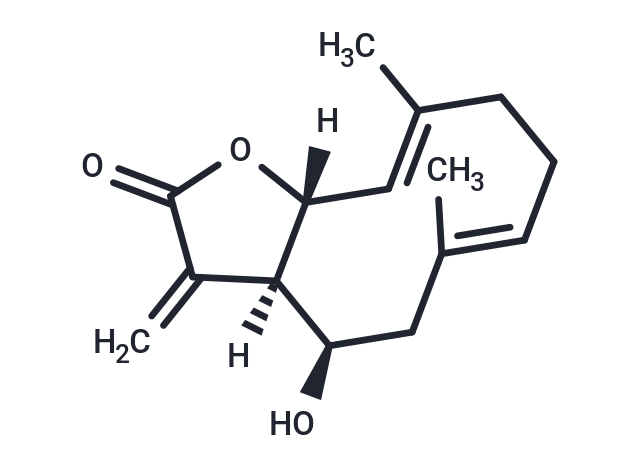Shopping Cart
- Remove All
 Your shopping cart is currently empty
Your shopping cart is currently empty

Eupatolide is isolated from the flowers of Inula japonica with anti-inflammatory activity. Eupatolide can be used in studies about TRAIL resistance in breast cancer cells.

| Pack Size | Price | Availability | Quantity |
|---|---|---|---|
| 1 mg | $800 | In Stock |
| Description | Eupatolide is isolated from the flowers of Inula japonica with anti-inflammatory activity. Eupatolide can be used in studies about TRAIL resistance in breast cancer cells. |
| In vitro | Eupatolide exhibits potent cytotoxicity against HL-60, SMMC-7721, A-549, MCF-7, and SW-480 cancer cell lines (IC50: 1.57 to 22.58 uM). Eupatolide sensitizes breast cancer cells to TRAIL through the down-regulation of c-FLIP expression. In RAW264.7 cells, Eupatolide inhibits lipopolysaccharide-induced COX-2 and iNOS expression by inducing proteasomal degradation of TRAF6. Eupatolide suppresses PDGF-induced proliferation and migration of VSMC through HO-1 induction via ROS-Nrf2 pathway and may be a potential HO-1 inducer for preventing or treating vascular diseases[1]. |
| Molecular Weight | 248.32 |
| Formula | C15H20O3 |
| Cas No. | 6750-25-0 |
| Smiles | C=C1[C@]2([C@](OC1=O)(/C=C(\C)/CC/C=C(\C)/C[C@H]2O)[H])[H] |
| Relative Density. | 1.11 g/cm3 (Predicted) |
| Storage | store at low temperature,keep away from direct sunlight,keep away from moisture | Powder: -20°C for 3 years | In solvent: -80°C for 1 year | Shipping with blue ice. |

Copyright © 2015-2025 TargetMol Chemicals Inc. All Rights Reserved.